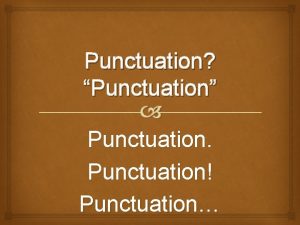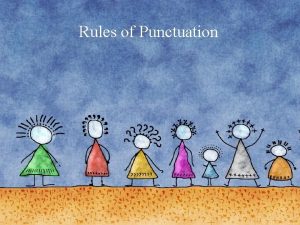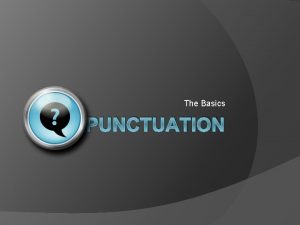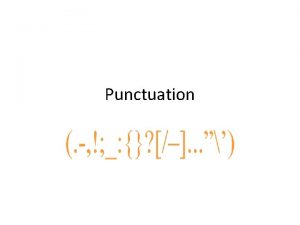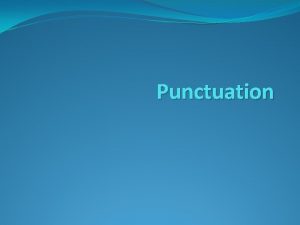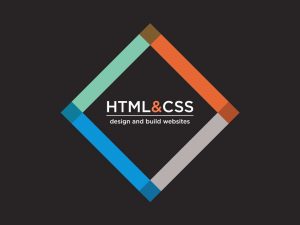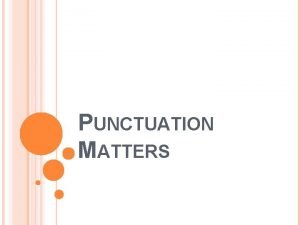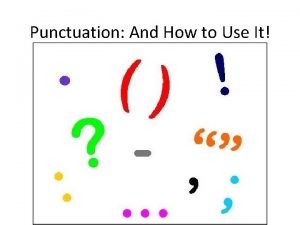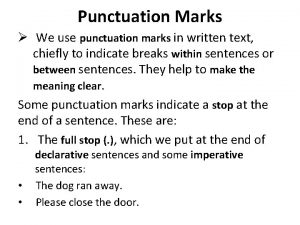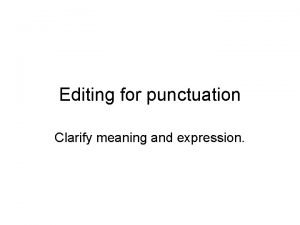Punctuation Use for pages 68 69 Punctuation Punctuation














- Slides: 14

Punctuation Use for pages 68 & 69

Punctuation �Punctuation marks are symbols that are used in sentences and phrases to make the meaning clearer.

Apostrophe � to show possession of a noun � to show the omission of letters �I can’t see the cat’s tail.

Colon �A colon is used before a list or quote. �A colon is used to separate hours and minutes. �There are many punctuation marks: period, comma, colon, and others. �The time is 2: 15

Comma �A comma is used to separate phrases or items in a list. �She bought milk, eggs, and bread.

Dash �A dash is used to separate parts of a sentence.

Exclamation Point �An exclamation point is used to show excitement or emphasis. �It is cold!

Parentheses �Parentheses are curved lines used to separate explanations or qualifying statements within a sentence.

Period �To show that a sentence has ended �To show that an abbreviation has ended � As a decimal point �I see the house.

Question Mark �A question mark is used at the end of a question. �When are we going?

Quotation Marks �Quotation marks are used at the beginning and end of a phrase to show that it is being written exactly as it was originally said or written. �She said, "Let's eat. "

Semicolon �To combine two closely related complete sentences which are not joined by a conjunction. � To separate complete sentences that are joined by a conjunctive adverb. �Class was canceled today; Mr. Smith was home sick.

Hyphen �Use to create compound words or when writing numbers twenty-one to ninetynine and fractions (five-eighths, onefourth).

Ellipsis �Use when you're quoting material and you want to omit some words.















